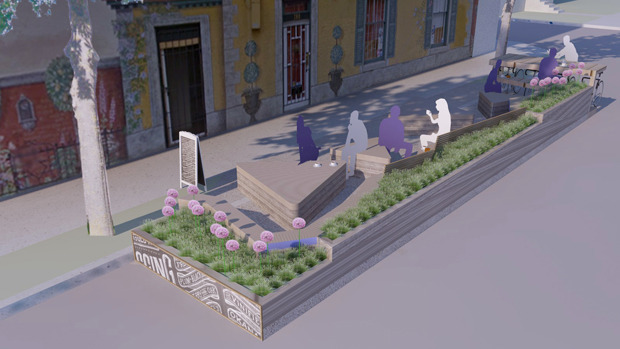Over the past couple of years, the City of Vancouver has been climbing the most livable cities indexes. Vancouver has shifted priorities to improving urban mobility, community engagement and social vitality. VIVA Vancouver is one such policy that provides funding for applicants who want to transform public parking spaces into mini-parks. This funding opportunity paved the way for the French Quarter Parklet to be born.
The parklet will occupy two parking spaces outside Chocolaterie de la Nouvelle France. With support from the Chocolaterie as well as PWL Partnership Landscape Architects and the property manager, the parking spaces will be transformed into a place where passerby's can unwind. The Parklet will be equipped with a bike bar (one of the first in North America), art wall, planters, benches an tables with umbrellas.
The French Quarter Parklet is a product of research conducted by one of PWL’s own interns. While performing research for her Master’s thesis, Kathleen Corey, identified locations that would be ideal to host a parklet and support local business simultaneously.
What’s amazing about this project is that it demonstrates what can happen when communities re-claim public spaces. By converting just two parking spaces into a community meeting place, it produced unforeseen economic and social benefits. You can watch the positive reaction of The French Quarter Parklet here.








